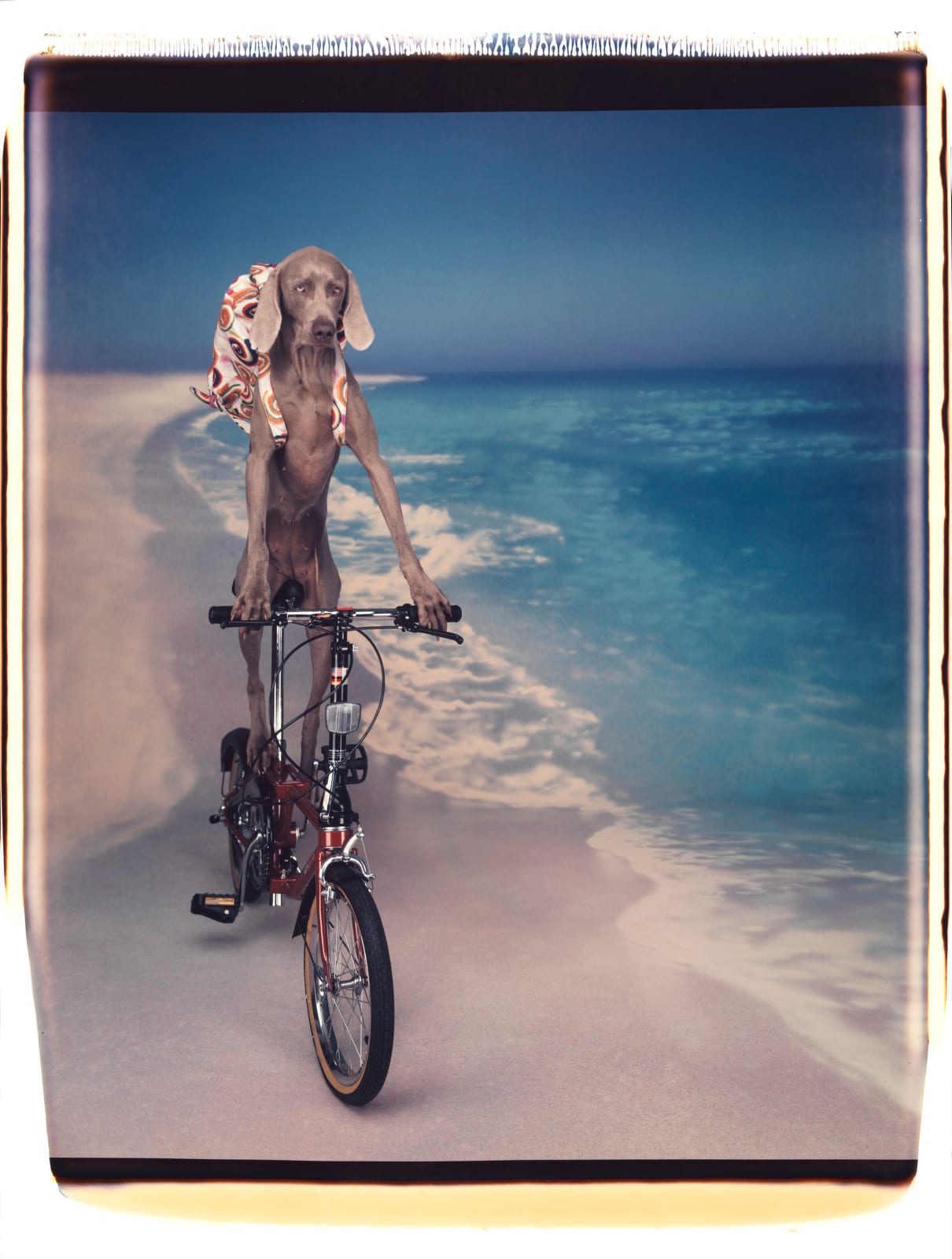
William Wegman American, b. 1943
.
24 x 20 in
.
The photograph exemplifies Wegman's mastery of the revolutionary 20x24 Polaroid camera—a 235-pound behemoth that produced single, unrepeatable prints with unprecedented scale and immediacy. By 1991, Wegman had perfected his collaborative approach with Weimaraners, whose innate ability to "hold still and focus" made them ideal subjects for the camera's extended exposure requirements.
This studio-constructed beach scene reflects Wegman's sophisticated approach to controlled environment photography. Working within his carefully arranged studio space, Wegman created artificial backdrops and constructed sets that allowed for precise lighting control and compositional planning. The beach setting, rather than representing an outdoor adventure, demonstrates Wegman's skill in creating convincing artificial environments within the controlled conditions of his photography studio.
The image embodies what critic Joan Simon described as Wegman's exploration of "art-about-art references". The bicycle becomes a prop that simultaneously suggests human activity while highlighting the absurdist humor inherent in the dog's dignified presence. This juxtaposition reflects Wegman's broader artistic project of using Weimaraners to comment on human conventions and social mores.
The vintage Polaroid aesthetic—with its distinctive color saturation and soft focus—lends the image a dreamlike quality that enhances its surreal impact. Working in his studio environment, Wegman had complete control over lighting conditions, backdrop selection, and prop placement, allowing him to create images that were both immediately accessible and conceptually sophisticated.
This photograph demonstrates Wegman's pioneering use of animals as subjects in contemporary art. It works on multiple levels: as humorous visual commentary, sophisticated conceptual art, and documentation of unprecedented artistic collaboration between human and animal. The work captures what Wegman calls "pack aesthetics"—collaborative art production emerging from his unique partnership with Weimaraner companions.
The photograph ultimately represents perfect absurdist poetry, where the natural grace of the Weimaraner, mechanical precision of the bicycle, and carefully constructed beach backdrop combine to create timelessly surreal imagery. The studio setting allowed Wegman to achieve the precise control necessary for this conceptual masterpiece, demonstrating how constructed environments can be as powerful as natural settings in creating compelling artistic narratives.